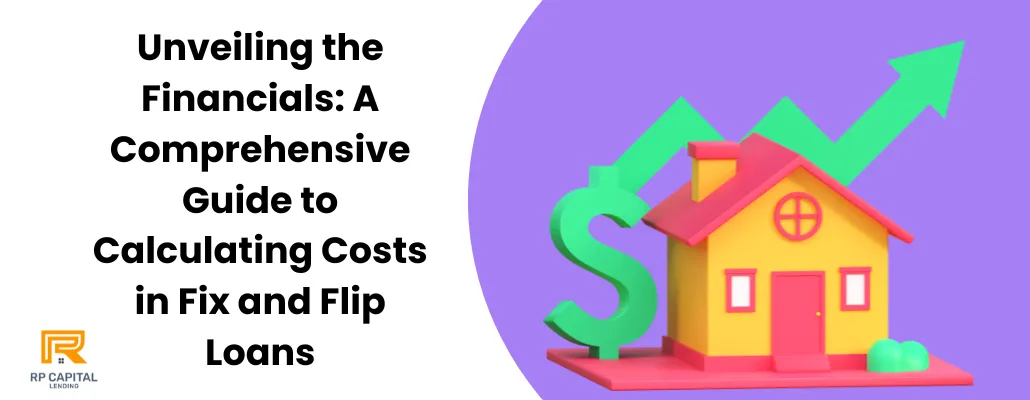Blog

Unveiling the Financials: A Comprehensive Guide to Calculating Costs in Fix and Flip Loans
Ready to Flip Your Way to Profit? Understand Your Costs First!
Are you dreaming of turning a rundown property into a lucrative investment? The excitement of buying, renovating, and selling homes—often referred to as "fix and flip"—can be highly rewarding. However, the success of your venture heavily relies on accurately calculating the costs associated with fix and flip loans. Let’s dive into how these loans work and what expenses you should expect to ensure your next flip isn’t a financial flop!
Understanding Fix and Flip Loans
Fix and flip loans are a type of real estate financing used primarily by investors looking to purchase properties, renovate them, and sell them for a profit within a short period, typically a year or less. Unlike traditional mortgages, these loans are not meant for long-term investments. Here are the critical components of fix and flip loans:
1. Interest Rates
Type of Rates: Fix and flip loans typically come with higher interest rates than conventional home loans due to the higher risk associated with real estate flipping.
Factors Affecting Rates: Credit score, experience in flipping, the loan-to-value ratio, and the property's potential are significant factors.
2. Loan Fees
Origination Fees: This is a one-time fee charged by the lender to process the new loan, usually ranging from 1% to 3% of the total loan amount.
Closing Costs: These may include appraisal fees, attorney fees, and other administrative costs.
3. Repayment Terms
Duration: These loans are often short-term, typically 12 to 18 months.
Payment Structure: Interest-only payments with a balloon payment at the end are common in fix and flip loans.
4. Loan Amount
Determining the Loan Amount: Lenders usually provide a percentage of the purchase price or the after-repair value (ARV) of the property, which can affect your budgeting.
Calculating the Real Cost of a Fix and Flip Loan
To accurately estimate the total cost of a fix and flip loan, consider the following components:
Interest Payments: Calculate the total interest you will pay during the term of the loan.
Points and Loan Fees: Points are upfront charges that lenders may impose to increase the yield on the loan, typically quoted as a percentage of the principal.
Renovation Costs: Ensure a thorough estimation of renovation costs to avoid unforeseen expenses.
Holding Costs: These include property taxes, insurance, and utilities, which accrue until the property is sold.
Five FAQs on Fix and Flip Loans
Q1: What is the best way to find a fix and flip loan?
A1: Research online for lenders specializing in real estate investments, or consult with a financial advisor to find the best rates and terms.
Q2: How do I calculate the return on investment (ROI) for a fix and flip project?
A2: Subtract the total cost of purchasing, renovating, and holding the property from the selling price. Then, divide by the total costs and multiply by 100 to get the ROI percentage.
Q3: Can I get a fix and flip loan with a low credit score?
A3: Yes, it's possible, but expect higher interest rates and fees. Lenders typically focus more on the property's potential and your experience than on credit scores.
Q4: What happens if I can’t sell the property quickly?
A4: Consider renting out the property to cover your costs until you can sell. Having a backup plan is crucial for managing risks in real estate flipping.
Q5: Are there alternatives to traditional fix and flip loans?
A5: Yes, you can explore options like home equity lines of credit (HELOCs), private lenders, or partnerships with other investors for funding.
Conclusion: Setting the Stage for Success
The allure of fix and flip projects is undeniable, but the foundation of any successful flip lies in precise financial planning and understanding of loan costs. By familiarizing yourself with the components of fix and flip loans, accurately calculating all associated costs, and preparing for potential setbacks, you position yourself to maximize profits and achieve success in the flipping industry. Remember, every flip has its flipsides—ensure you’re covered on all fronts!
Happy flipping!
RP Capital Lending is a d.b.a of RP Capital Partners Inc (NMLS # 2469193) | Privacy Policy
Copyright © 2022. All Rights Reserved.
Disclaimer: Loans only apply to non-owner occupied properties. Rates, terms and conditions offered only to qualified borrowers, may vary upon loan product, deal structure, other applicable considerations, and are subject to change at any time without notice.

